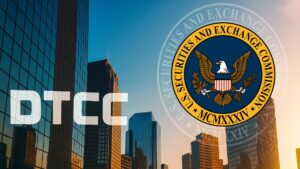In a recent interview at the World Economic Forum in Davos, Jeremy Allaire, the CEO of Circle, expressed optimism about the future of stablecoin regulation. Allaire anticipates that 2024 could be a significant year for the progress of U.S. regulations for stablecoins.
Allaire highlighted the increasing global regulatory developments, with governments around the world actively working on digital currencies. He stated that although the United States is dragging behind in this aspect, the U.S. will possibly take substantial steps to assert leadership, aligning with bipartisan desires for crypto consumer protection and regulatory clarity.p
The Clarity for Payment Stablecoins Act, which is presently being reviewed by the House of Representatives, seeks to bring stablecoins under a regulatory framework akin to that of conventional financial services. Allaire, acknowledging the Act, hinted at a conducive climate for its approval in the United States in 2024.
Allaire, along with Circle’s Chief Strategy Officer, Dante Disparte, expressed a positive outlook for 2024 as a crucial year for stablecoin regulations in the U.S. Disparte underscored the bipartisan backing for stablecoin policies and suggested that apprehensions over the illicit use of certain cryptocurrencies could hasten regulatory measures.
Circle’s IPO Plans and SEC Approval

Circle, the firm responsible for the well-known stablecoin USD Coin, recently submitted a confidential S-1 registration to the U.S. Securities and Exchange Commission, signaling its intention to go public. Allaire, citing regulatory constraints, declined to comment on whether the timing of Circle’s IPO filing was influenced by the SEC’s endorsement of the first U.S. spot Bitcoin ETFs.
Allaire reiterated the importance of stablecoins, dubbing them as the “killer app” for blockchain technology. He foresees a wider global adoption of stablecoins in 2024, spurred by developments such as the spot ETF and enhanced regulatory transparency.
As the drive for stablecoin regulation intensifies, legislators continue to express apprehension about the possible exploitation of stablecoins for unlawful activities. Dante Disparte underscored instances where digital assets have been utilized to finance terrorism in the Middle East and to enable fentanyl trafficking in the United States.
In conclusion, Allaire’s confidence in the imminent regulation of stablecoins in the U.S. signals a promising future for the crypto industry. As we move closer to 2024, the anticipation builds for what could be a landmark year for stablecoin regulation.










